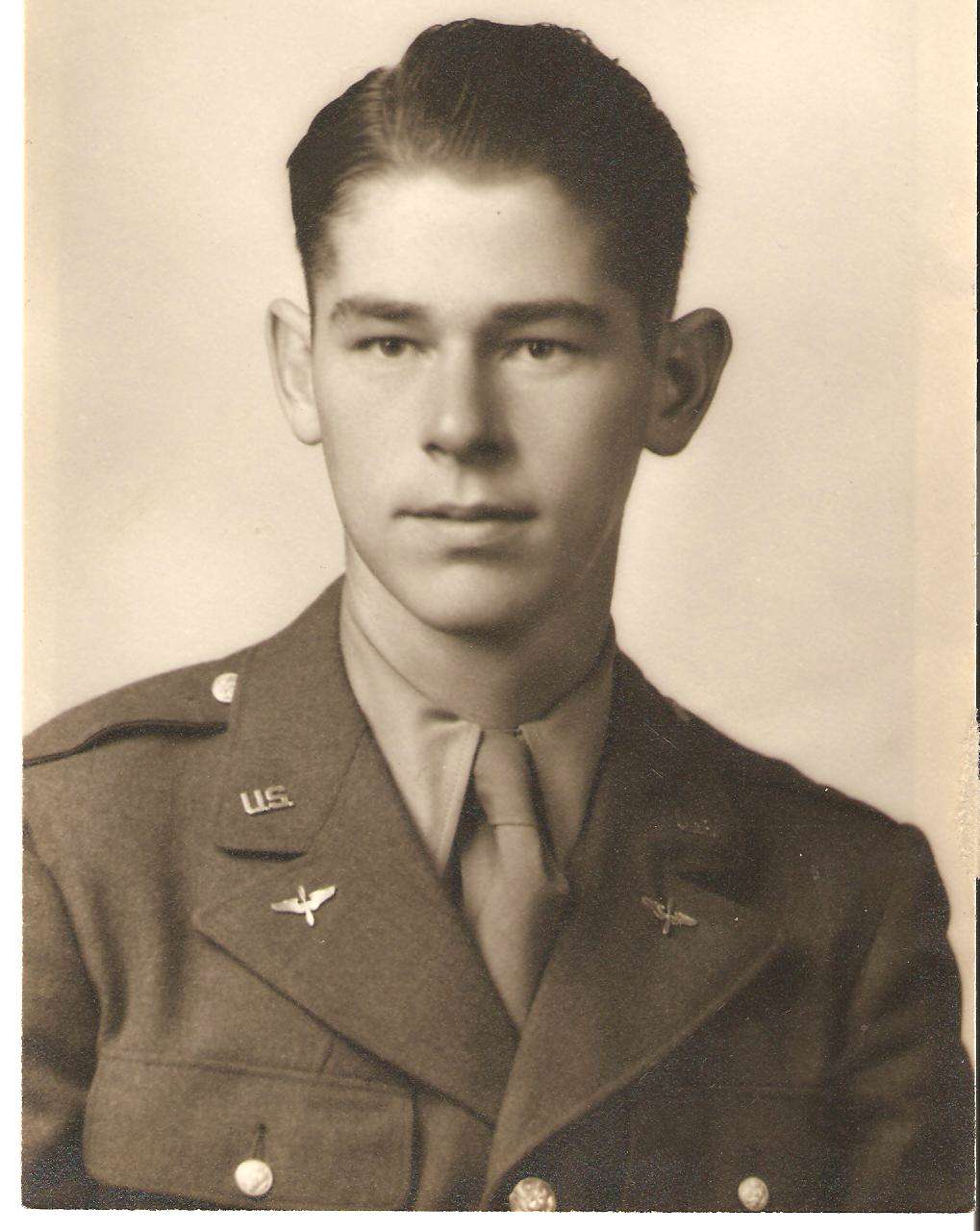- Second Lieutenant
- WW II
Biography
Robert John Barrat was born in Chicopee, Massachusetts on 14 February 1924 and grew up in Woonsocket, Rhode Island. He was the son of Joseph George and Ida May Barrat. Robert attended local schools in Woonsocket and entered Rhode Island State College (RISC) in September 1941 with the class of 1945. He was a member Tau Kappa Epsilon fraternity and participated in the Army ROTC program while a student. Robert left RISC during his second year and enlisted in the U.S. Army Air Force on 24 November 1942.
Private Robert J. Barrat graduated from the ten-week U.S. Army Air Force Preflight Training Program, a combination of enlisted basic training and officer candidate school. He was assigned as a cadet to the Aviation Cadet Training Program, U.S. Army Air Force Training Center, Duncan Field, Alabama. Upon completion of flight school, Robert was awarded his pilot’s wings, commissioned a Second Lieutenant and assigned to the 303rd Bombardment Group (H), Molesworth Field, England.
The 303rd Bombardment Group’s first of 363 missions were flown against airfields and marshalling yards in France and the Low Countries.Soon many German targets were hit; Mannheim and Ludeingshalen were attacked 12 times with only five losses. In the later stages of the war, the 303rd bombers struck industrial sites, transportation hubs and refineries throughout Germany with increased efficiency and decreased losses. As part of the effort to eradicate the German “Buzz Bomb” threat, the 303rd crews attacked 12 sites during 1944.
On 6 March 1944, the 303rd Group participated in one of the first strikes on Berlin. The Group took part in the aerial support of D-Day, 6 June 1944. On that date, the crews flew three separate missions between dawn and dusk in a ground support role rather than a strategic bombing force. Bombing almost around the clock occurred in June 1944, when 29 missions and 1000 sorties were flown.
On 9 February 1945, the B-17 “Hell’s Angels” with LT Robert Barrat as the pilot was one of 36 Flying Fortresses (B-17) that took off from England heading for the synthetic oil plant in Lutzkendorf, Germany. The visibility was poor as they neared the target, and the crew could hear excess propeller noise above them. The right wing of the B-17 above them hit LT Barrat’s plane, tearing off the rear part of the fuselage from the waist window back. LT Barrat’s plane was seen going down out of control in two sections. Miraculously, the tail gunner SGT George H. Emerson managed to parachute out of the severed tail. He became a POW and was released after the war.
Simultaneously, another miracle was reported by German civilians on the ground near Eissenburg, Germany. The main portion of the fuselage was headed for the center of the village of Eissenburg. Just before it would have crashed into the village, killing hundreds of civilians with its intact armed bomb load, LT Barrat and his co-pilot, LT Harvey managed to level the B-17 and dropped the bombs outside the village. One farmhouse was hit by a bomb that killed ten people. The remainder of the town was not damaged. LT Barrat’s B-17 then crashed and exploded in a wooded area near Eissenburg.
In 1991, the crash site was located. Aircraft parts and human remains were found including LT Barrat’s ring with the initials “RJB” on it. In 1995, the villages erected a memorial to the crew who gave their own lives to save hundreds of villagers. This was the first time that German villagers had honored American airman. LT Barrat and seven other crew members of the B-17 (Hell’s Angels) were buried with full military honors in a joint grave at Jefferson Barracks Cemetery, St. Louis, Missouri.
For his actions, Second Lieutenant Robert J. Barrat, U.S. Army Air Forces was cited for Gallantry in Action and Bravery and awarded the Distinguished Flying Cross (Posthumously).
Citation – Distinguished Flying Cross
The President of the United States of America, authorized by act Congress on 2 July 1926, takes pleasure in presenting the Distinguished Flying Cross to Lieutenant Robert John Barrat United States Army Air Forces, for extraordinary heroism in connection with military operations against an armed enemy of the United States while serving as a B-17 pilot, 303rd Bombardment Group (H), 8th Air Force, European Theater World War II. Lieutenant Robert John Barrat’s heroic and fearless leadership in the face of all odds has reflected the highest credit upon himself and the Armed Forces of the United States.
Lieutenant Robert John Barrat, U.S. Army Air Forces was a hero in defeating the Germans in the European Theater. He was a son of Rhode Island and America who answered the call to duty and gave his life during World War II. He is considered an heroic member of the “Greatest Generation.”
Education
1945

